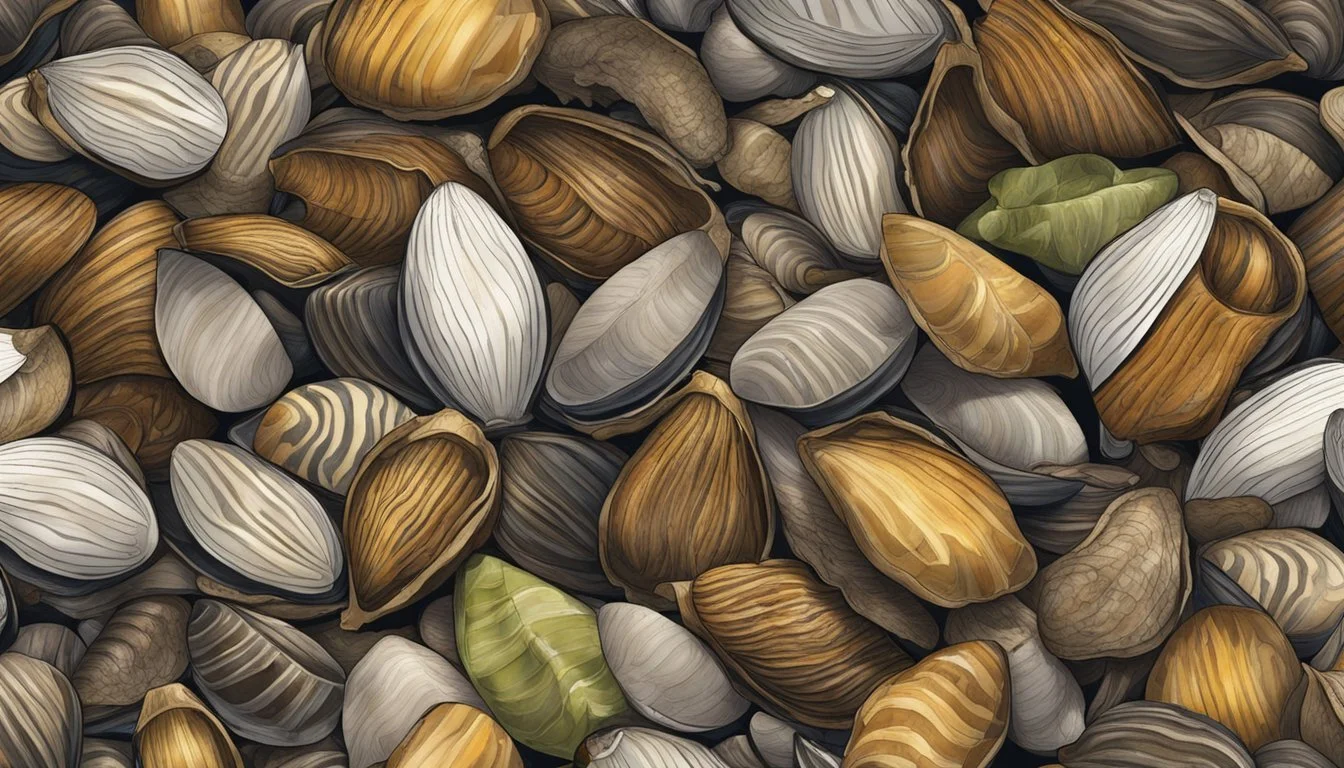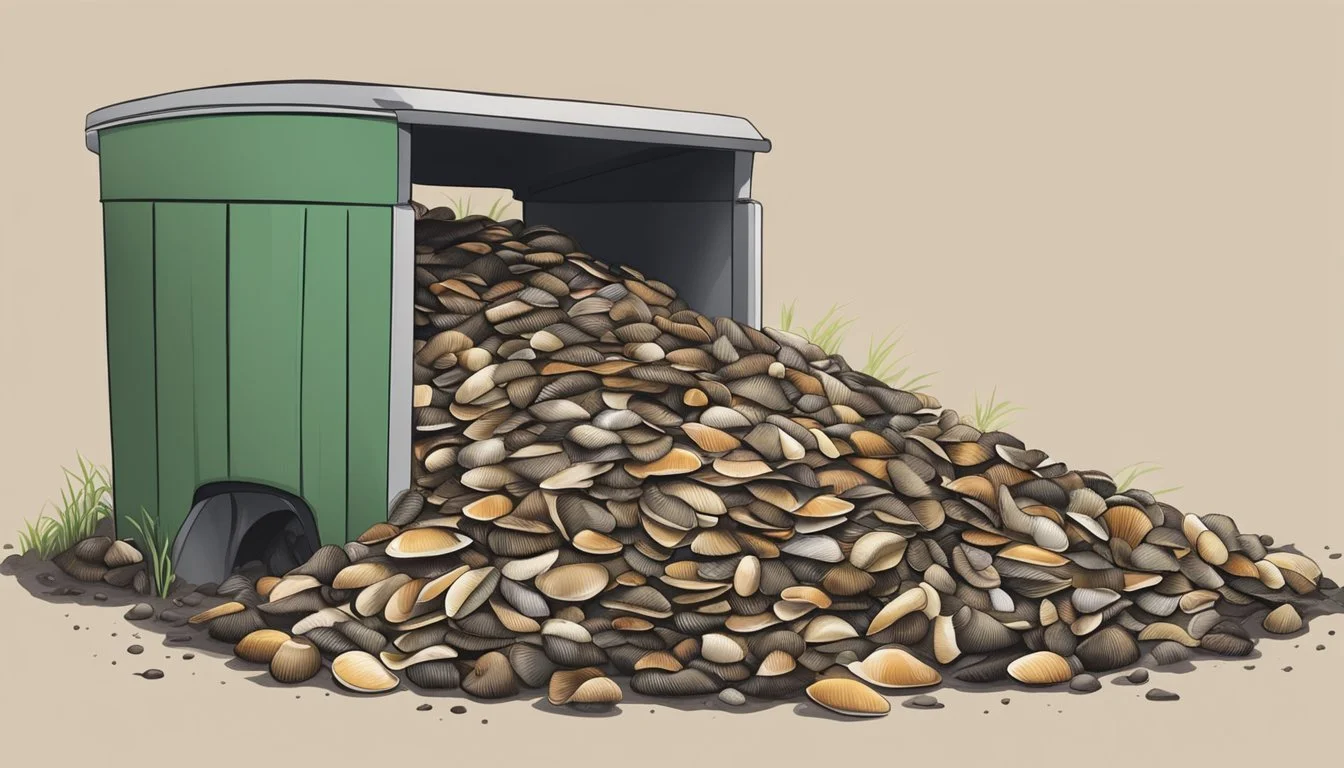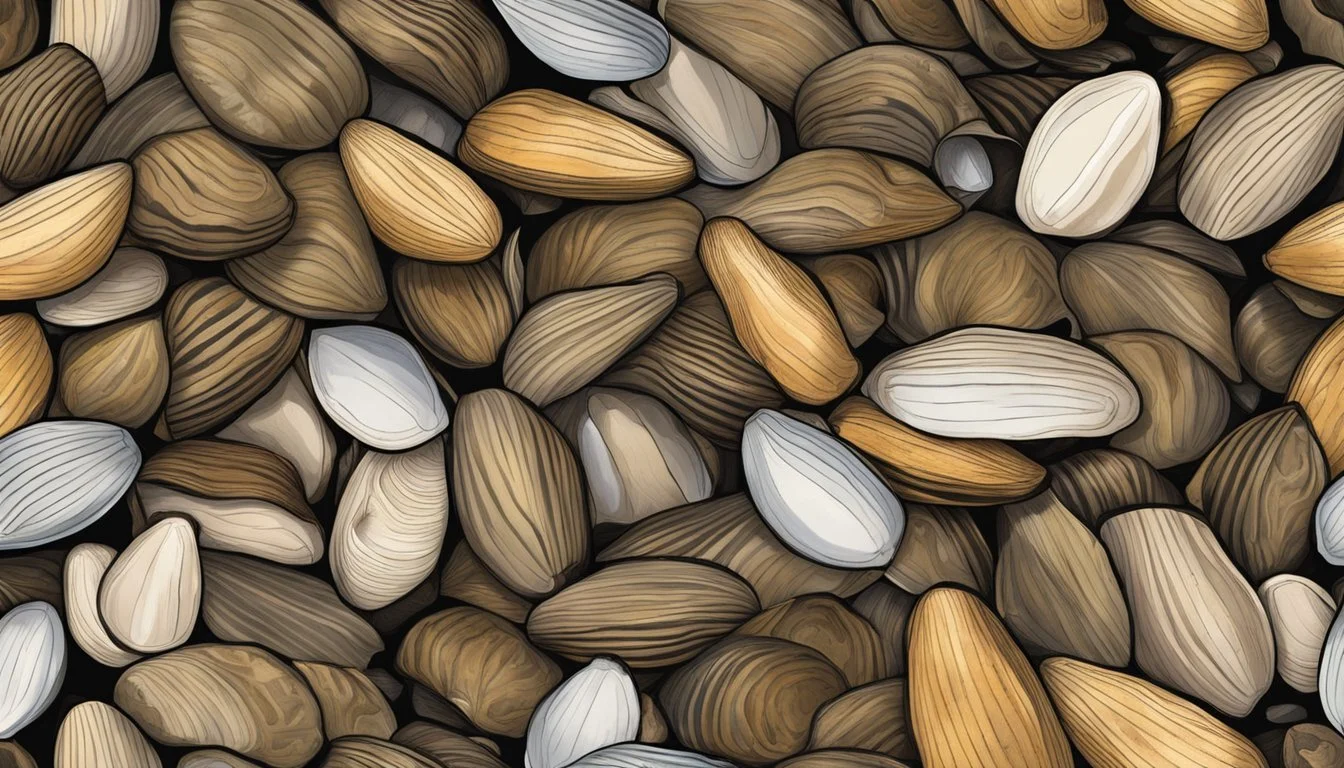Can You Compost Zebra Mussel Shells?
Unveiling Composting Best Practices
Zebra mussels, (What wine goes well with mussels?) small freshwater mollusks native to Eastern Europe and Western Asia, have made their way into waterways across North America. They often garner attention for their invasive nature and the ecological challenges they present. Yet, there is growing interest in the potential to compost their shells, a process that could offer an environmentally friendly waste management solution. Composting zebra mussel shells can contribute to soil health by improving structure and fertility while also reducing landfill waste.
The decomposition of zebra mussel shells in composting systems is a slow process due to their high calcium carbonate content. This mineral, commonly found in limestone, contributes to soil neutralization and provides essential nutrients for plant growth. Furthermore, the shells are biodegradable, breaking down through natural processes without causing pollution. As such, they can be utilized to create a more sustainable agricultural practice by enriching compost with valuable nutrients.
Understanding Composting
Composting is an essential process that transforms organic waste into a valuable soil amendment, enriching the soil with nutrients, enhancing its structure, and fostering a healthier gardening ecosystem.
Basics of Composting
Composting is the controlled breakdown of organic matter—such as leaves, fruit scraps, and even zebra mussel shells—into nutrient-rich compost. The process hinges on the right balance of carbon-rich materials (browns) and nitrogen-rich materials (greens). Browns provide energy for microorganisms and include dried leaves, branches, and paper. Greens, like fruit waste and nitrogen, are the microbes' protein source, helping them grow and multiply. A successful compost pile needs adequate moisture and air circulation for the organic matter to decompose effectively.
Composting Benefits for Soil
Incorporating compost into the soil improves its overall fertility and structure. Composted material can enhance soil drainage, retain water when dry, and introduce beneficial microorganisms and nutrients. Nutrients released during the decomposition of compostable material, including carbon and nitrogen, are essential for plant growth, making compost a potent natural fertilizer for gardening purposes.
Role of Microorganisms in Composting
Soil microbes play a pivotal role in composting. They break down organic matter into simpler substances, turning the compost pile into a thriving ecosystem of bacteria, fungi, and invertebrates. The decomposition process is primarily aerobic, meaning it requires oxygen. Regularly turning the compost pile ensures that microorganisms have the oxygen they need, thus avoiding the creation of odor-causing anaerobic conditions. As these microbes decompose organic materials, they generate heat, which helps to sterilize the compost, killing pathogens and seeds.
Specifics of Composting Zebra Mussel Shells
Composting zebra mussel shells can enhance soil quality by adding calcium and other minerals, but proper preparation is key to their effective decomposition and nutrient release.
Nutritional Content of Mussel Shells
Zebra mussel shells are primarily composed of calcium carbonate, with small quantities of magnesium and other minerals. These shells, once broken down, release calcium slowly into the compost, which is an essential nutrient for plants. The presence of calcium not only contributes to the nutritional content of the compost but also plays a role in stabilizing pH levels, as it can help to create a more alkaline soil environment.
Calcium Carbonate: Essential for plant cell structure
Magnesium: Supports chlorophyll production
Mussel Shells in Soil Amendment
Mussel shells, when added to soil as an amendment, improve soil structure and drainage. Their gradual decomposition enhances soil texture, making it loose and aerated, which facilitates better root growth. Additionally, the calcium contained in zebra mussel shells helps to strengthen the cell walls of plants, promoting overall plant health. These benefits collectively lead to more nutrient-rich and fertile soils conducive for gardening and farming.
Soil Structure: Improved by adding crushed shells
Fertility: Enhanced through slow release of minerals
Preparing Mussel Shells for Compost
Before adding zebra mussel shells to a compost pile or bin, they should be crushed or pulverized. This increases their surface area and expedites their breakdown by microbial activity. The process of preparing mussel shells typically involves cleaning them to remove any organic material and then crushing the shells into smaller pieces. This can be done manually or with a mechanical crusher.
Cleaning: Removing organic residue from shells
Crushing: Facilitates faster decomposition and integration into soil
Composting Process and Materials
The composting process benefits from the correct balance of carbon-rich browns and nitrogen-rich greens, alongside effective management techniques to transform materials like zebra mussel shells into nutrient-rich compost.
Balancing Green and Brown Materials
Composting requires a balance between green materials (nitrogen-rich) and brown materials (carbon-rich). The ideal ratio for a hot compost pile is roughly 25 to 30 parts brown to 1 part green by volume.
Green materials include:
Kitchen scraps
Grass clippings
Zebra mussel shells (nitrogen content)
Brown materials consist of:
Dry leaves
Straw
Sawdust
Cardboard
Compost Pile Management
Proper compost pile management promotes decomposition while maintaining a healthy environment for soil microbes:
Hot compost relies on maintaining temperatures between 130°F and 160°F to accelerate decomposition and kill pathogens.
Regular turning of the pile introduces oxygen, crucial for microbes and for maintaining the appropriate pH levels.
Moisture content should be monitored; a compost pile should be as wet as a wrung-out sponge to optimize microbial activity.
Managing a compost pile with zebra mussel shells involves incorporating these shells into the green material category, and ensuring they are broken down into smaller pieces for faster integration into the soil.
Compost Safety and Environmental Concerns
As composting becomes an increasingly popular method to recycle organic waste and enhance soil health, safety and environmental considerations are paramount in the practice, particularly with materials like zebra mussel shells that carry specific risks such as invasive species contamination and improper nutrient balancing.
Avoiding Contamination with Invasive Species
Zebra mussels are an invasive species notorious for hitching rides on ships and colonizing water bodies far from their native range. They've notably impacted ecosystems in the Great Lakes and the St. Lawrence Seaway. It's crucial to ensure these mussels are not inadvertently spread through composting. The shells should be thoroughly cleaned to remove any living organisms. Here is a concise guide to preventing the spread of invasive zebra mussels through compost:
Rinse: Shells must be rinsed thoroughly in hot water to remove any attached organisms.
Sterilize: Boiling or baking the shells at high temperatures can help eliminate any remaining microorganisms.
Monitor: Watch for signs of uncharacteristic growth in your garden that could signify contamination.
Safe Compost Practices
When integrating zebra mussel shells into compost, it's essential to use safe practices that encourage composting benefits without introducing risks to the soil and environment. Shells add trace minerals useful to the soil but must be broken down properly:
Crush Shells: Smaller pieces decompose faster and more evenly, releasing nutrients like calcium that can act as garden lime.
Balance Compost: Mussel shells should be balanced with other compost materials such as vegetable scraps, avoiding meat, dairy, and processed foods that may attract pests.
Test Soil: Before using compost with mussel shells in your garden, test the soil pH to ensure it remains at optimal levels for plant growth.
By adopting these safety measures, gardeners can make the most of composting zebra mussel shells while protecting the ecosystem and maintaining the quality of their compost.
Utilizing Composted Mussel Shells
Composted mussel shells are proven to enrich garden soil and offer various uses beyond mere disposal. They provide key nutrients essential for healthy plant growth.
Enhancement of Garden Soil
Composted zebra mussel shells add calcium and magnesium to the garden soil, crucial for the growth of plants. When these shells decompose, they release these minerals slowly, allowing for a sustained nutrient supply. The addition of crushed mussel shells can:
Improve soil structure, making it more porous for better root expansion.
Neutralize acidic soils, acting similarly to garden lime.
Provide a slow-release source of nutrients, which is beneficial for garden beds and potted plants.
Encourage the activity of soil microbes, which play a vital role in breaking down organic matter and maintaining soil health.
Calcium, a major component found in mussel shells, is particularly important for the development of strong cell walls in plants. This addition ensures healthy plant growth and better crop yield.
Other Uses for Composted Shells
Beyond soil enrichment, composted mussel shells have other practical applications:
Drainage enhancement: When incorporated into compost piles or used in trench composting, the coarse nature of shell fragments improves drainage and aeration.
As a protective barrier: Scattered around plants, shell fragments can deter slugs and snails.
Decorative mulch: Crushed shells can be aesthetically pleasing when used as a top layer around plants or pathways.
Just like eggshells, oyster, clam, and lobster shells, zebra mussel shells can be an addition to a compost pile that contributes to the organic matter content, which is fundamentally vital for any composting process. Whether mixed with fruit scraps or used as part of a multifaceted composting strategy, mussel shells can be a gardener's ally in creating a nutrient-rich environment for plants.
Alternative Uses for Zebra Mussel Shells
While zebra mussel shells are commonly known for their composting benefits, they possess versatility beyond soil enrichment. The calcium carbonate and chitin found in these shells present opportunities for resourceful reuse in crafts and industrial applications.
Crafts and Home Decor
Zebra mussel shells, with their unique patterns and sturdiness, can be repurposed into home decor items and various crafts. Their size and shape make them ideal for creating:
Mosaic tiles: When crushed or intact, they contribute texture and visual interest.
Jewelry: The shells can be fashioned into pendants or earrings.
Soap dishes: Their biodegradable nature and durability provide an eco-friendly bathroom accessory.
With a natural beauty reminiscent of the oceans, zebra mussel shells offer an authentic touch to any piece of art or practical item designed for the home.
Agricultural and Industrial Applications
Beyond aesthetics, zebra mussel shells have pragmatic uses in agricultural and industrial contexts. They can be utilized as:
Soil amendment: Crushed mussel shells add calcium and other minerals to the soil, improving structure and pH levels.
Filtration media: Ground shells can be incorporated into systems that neutralize acidity or clarify water.
Poultry feed additive: Finely ground shells provide a source of calcium for egg-laying hens.
In agricultural settings, shells can also be used as a component in mulch mixtures with peat, wood chips, and other organic materials, contributing to a balanced compost for gardens.
By recognizing the potential of zebra mussel shells, we can give these byproducts a second life in a variety of creative and pragmatic ways, extending their utility beyond their role in aquatic ecosystems.







